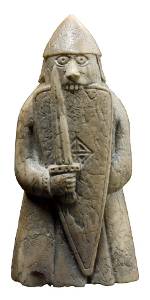Chessmen from Uig, Lewis, western isles of Scotland, c.1150-1175, Portraying Warriors

A hoard of 78 pieces was found in 1831 in the parish of Uig on the Isle of Lewis in the Outer Hebrides.
Scots Isles Warder 116
Scots Isles Warder 117
Scots Isles Warder 118
Scots Isles Warder 119
Scots Isles Warder 120
Scots Isles Warder 121
Scots Isles Warder 122
Scots Isles Warder 123
Scots Isles Warder 124
Scots Isles Warder 125
Scots Isles Warder NMS
Scots Isles Warder NMS-berserker
A Scots Islesmen from Armies of Feudal Europe 1066-1300 by Ian Heath - based on the Lewis chessmen.
MIRROR SITE
Chessmen from Uig, Lewis, western isles of Scotland, c.1150-1175, Portraying Warriors
A Scots Islesmen from Armies of Feudal Europe 1066-1300 by Ian Heath - based on the Lewis chessmen.
Druzhina
12th Century Illustrations of Costume & Soldiers
A hoard of 78 pieces was found in 1831 in the parish of Uig on the Isle of Lewis in the Outer Hebrides.
Scots Isles Warder 116
Scots Isles Warder 117
Scots Isles Warder 118
Scots Isles Warder 119
Scots Isles Warder 120
Scots Isles Warder 121
Scots Isles Warder 122
Scots Isles Warder 123
Scots Isles Warder 124
Scots Isles Warder 125
Scots Isles Warder NMS
Scots Isles Warder NMS-berserker
A Scots Islesmen from Armies of Feudal Europe 1066-1300 by Ian Heath - based on the Lewis chessmen.
MIRROR SITE
Chessmen from Uig, Lewis, western isles of Scotland, c.1150-1175, Portraying Warriors
A Scots Islesmen from Armies of Feudal Europe 1066-1300 by Ian Heath - based on the Lewis chessmen.
Druzhina
12th Century Illustrations of Costume & Soldiers














